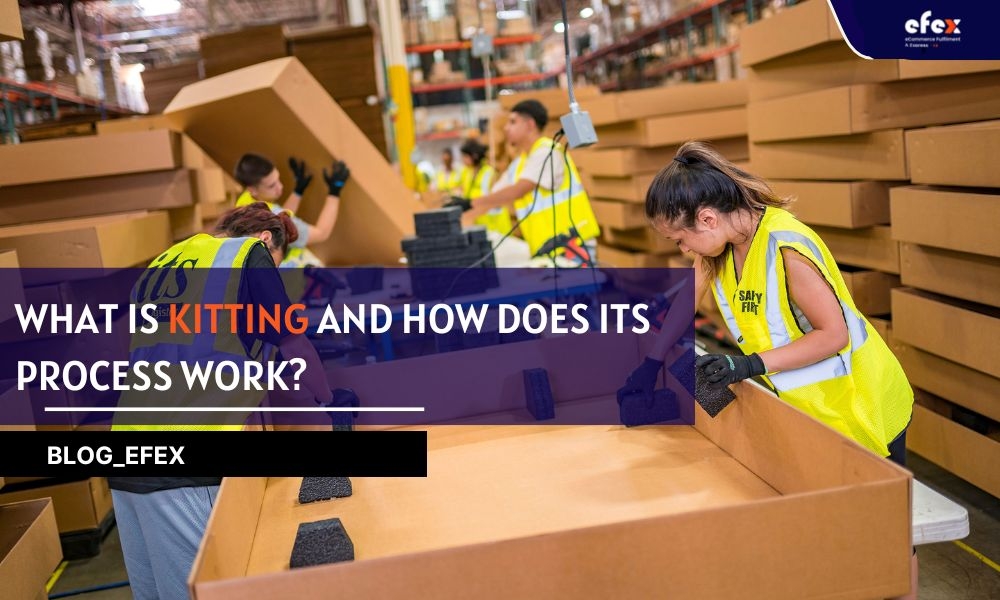
Warehouse kitting will help eCommerce companies save money and effort while also strengthening their inventory system. This is a value-added service that may be as important as choosing, packing, and delivering in your eCommerce fulfillment. Kitting is particularly useful if you offer goods that are frequently purchased together, as you can assemble together a package ahead of time, prior to placing an order. This post will discuss warehouse kitting, how to define kitting and how it can assist your business.
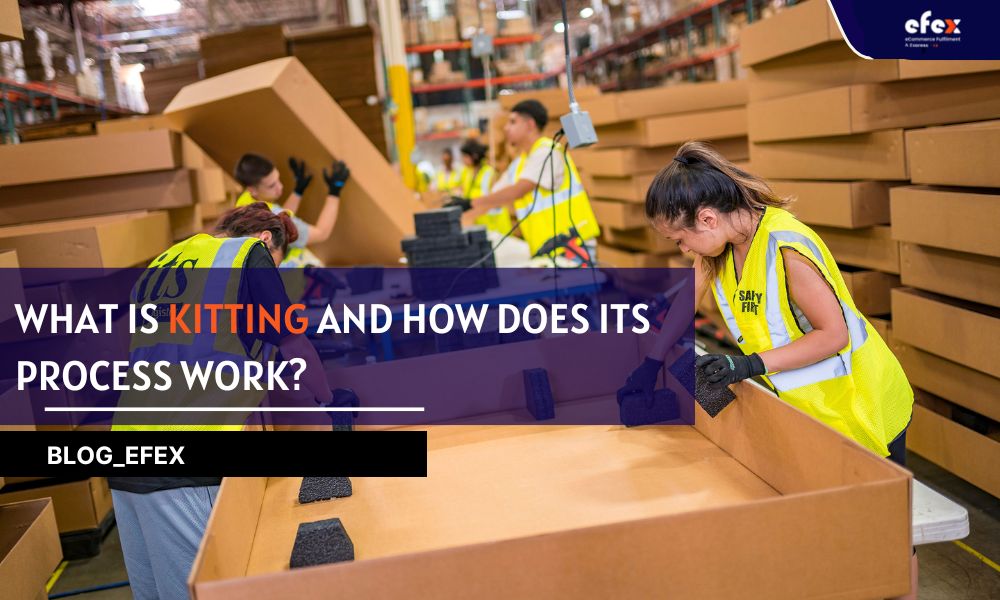
Kitting is the process of combining separate single items to generate a new single SKU that contains numerous goods but is distributed as an individual product. Individual goods can be pre-assembled into bundles and shipped together fast rather than choosing and packaging them separately, which may be time-consuming.
For instance, subscription boxes are a popular type of kitting that has grown in popularity over the years. Rather than 7 different producers promoting their goods differently, subscription box suppliers combine them and sell them as a single package.
Let's take a look at a simple example! Instead of 7 roasters competing for sales, they collaborate to develop the greatest coffee subscription service, which distributes a single box regularly. Without a question, if you're just researching how to establish a coffee company, we suggest taking this approach. This enhances the worth of the individual items as well as their sales.
👉 Read More: What Is Cycle Inventory: Formula, Example
The process of combining numerous items into a single "kit" that is dispatched to the buyer is known as kitting in logistics.
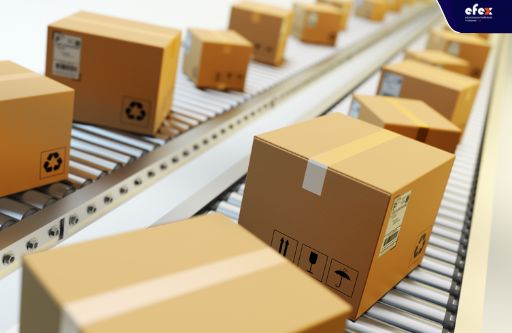
Kitting allows companies and logistics providers to improve shipment procedures, save shipping costs, and expedite order fulfillment. This also improves consumer satisfaction by making it easier to track shipments.
For instance, if you have ever bought many items from different sellers on Amazon, you've probably experienced logistics kitting in this case. Before shipment, the shipping staff gathers all of the items and assembles them into as many packs as possible. Each item would be transported separately under the existing model, increasing both the client's and the logistics company's costs.
The term "kitting services" relates to kitting done by third-party service businesses (3PL). To maintain fulfillment prices low and assure buyers get the minimum parcels possible, several companies hired 3PL companies to utilize kitting. It's also employed in manufacturing, in which a third party assembles the goods for the consumer.
For small companies, in-house bundling is frequently prohibitively expensive, therefore outsourcing kitting services maintains expenses down and allows the retailer to put effort into selling items.
The whole set of actions included in the product kitting process is known as kitting operations. Obtaining the orders, selecting the items, building the kit, wrapping the kit, and sending the kit are all part of this process. Kitting activities need specialized expertise as well as a well-organized warehouse structure. This guarantees that you save costs while also improving the efficiency of your fulfillment operation.
Workers may execute industrial activities more efficiently and decisively by using material kits. By separating the process of gathering components into discrete jobs, each employee may concentrate on one task at a time. Assembly staff will have all of the equipment they need to execute a production process if they use full kits.
Kitting may be handled at a warehouse alongside typical shipping operations and requires no special equipment or personnel. Nevertheless, it will necessitate a shift in how you pick goods, employ your staging area, as well as interact with processes.
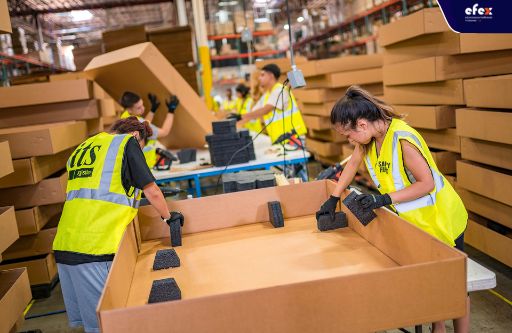
Kitting Procedures at the Warehouse To correctly kit products in a warehouse, only a few activities are necessary.
When using kitting, packing is critical to emphasizing brand recognition, ensuring that things are not broken during shipping, and lowering expenses. On completed kits, third-party carriers frequently provide private labeling. This implies that they collect the separate components of order and bundle them with brand names to help them appear as though they are all part of a single kit.
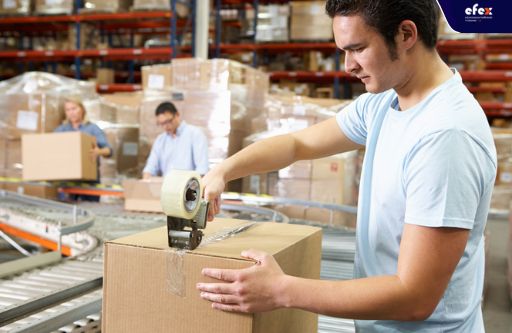
Kits that are properly packaged will store as many products as possible while still including sufficient branded packaging to draw attention to the business from which they bought. These boxes must also include extra bubble wrap or other packaging materials to prevent things from being damaged during delivery.
👉 Read More: What Is Finished Goods Inventory? Example And Formula
In online fulfillment, kitting is critical. The entire kitting process can acquire things that will be offered as subscription boxes, ensuring a quick and error-free fulfillment procedure. Kitting, on the other hand, can pre-pack products that are generally sent together to save time and make package consolidation easier.
In fulfillment, kitting does not usually imply multiple goods. Kitting is a method of adding additional packing to a delicate item in a warehouse. For example, packing glass pots within solid boxes with infill, for example, so the picker can carefully add them to shipments of ornamental paper flowers. Product and marketing components are combined in promotional fulfillment.
Customers who purchase a certain product, for example, may receive a voucher for a later discount. The coupon is placed with the product throughout the kitting procedure so that the picker may simply choose both things together. Kitting under your own label combines various goods from different suppliers into a single kit. Create activity packages for kids, project kits for craftsmen and enthusiasts, or subscription boxes using the private label kitting process.
👉 Read More: Kitting Service: Definition and Benefits
When transporting furniture, systems of entertainment, and other products that necessitates assembly after shipment, separate components are frequently kitted for transportation. This service is supported by a variety of third-party shipping services. They take individual parts from suppliers and put them together into single packages for transportation to the final address. These kits are completely separated from the individual parts before shipping.
Kitting software refers to software for inventory management that allows you to keep track of individual parts and generate new SKUs for kits before they're sent. There are a number of tools that can help you automate and track your kitting processes. When choosing kitting software, keep the following in mind:
Kitting provides a lot of advantages to businesses, including cost and time savings. It is a very valuable technique in eCommerce since it allows businesses to provide more SKUs by merging smaller orders into bigger ones.
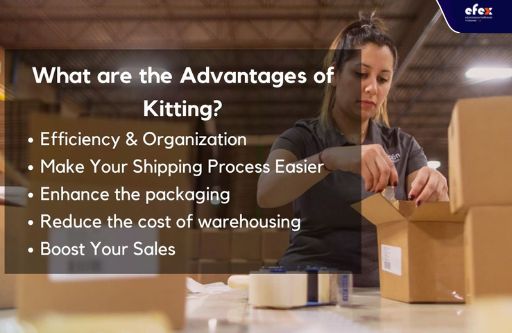
Kitting is an excellent technique to optimize and expedite your order fulfillment process. Kitting allows you to create fewer high-selling SKUs, making inventory management in your distribution hub easier. This may seem counterintuitive, but if you have goods that are regularly purchased together, putting them into a bundle will actually result in a reduced SKU count. This maximizes warehouse space and improves overall efficiency.
If you don't bundle your items and have to construct an order on demand, the fulfillment process may take substantially longer, causing potential shipment problems. Kitting helps to find the supplies you need for your most frequently purchased combinations, increasing the efficiency and profitability of your whole fulfillment process.
Bundling your items may also improve your shipping procedure considerably easier and more effective. By automating the process, you can reduce the chance of human mistakes while also shortening the average fulfillment time. Generating shipping labels as well as measuring assembled items ahead of time rather than after the order arrives can save time and money.
Kitting is also an excellent technique to save money on packaging. You can put your things together in a custom-sized box instead of packing each single SKU individually into standard-sized packages that may be too large. This might help you minimize the size and weight of your packages.
Besides, it also saves money on supplies such as box fillers and packaging tape, which can add up quickly if your shipment volume is significant. One of the ways that kitting may help you increase your profit margin is by minimizing your packing costs. You can take advantage of customized packaging solutions by outsourcing assembly & kitting services to a 3PL supplier.
Products can be picked specifically for occasions like Christmas time or special promotions, which is a huge benefit for internet shops. This provides additional income and sales opportunities while also increasing efficiency by packing and kitting product bundles in advance so they are available before your company's peak fulfillment hours.
A percentage of the cost of warehouse and logistics services is determined by the storage space your things require. Kitting SKUs (with bundled products) will use up less space than individual items. In warehousing, kitting methods bring a degree of standardization to the supply chain that makes cost modeling easier.
This is because each kit's contents are predefined, estimating expenses is significantly easier than if the components had to be chosen, packaged, and sent separately. You may save money on storage costs by reducing the footprint your items take up in a warehouse.
Finally, kitting will be used as an effective sales approach. Examine related goods in your inventory, such as chargers & power strips. You need to clear space for new inventory, therefore you'd want to sell some of your available items. If you package them together and sell them as a package at a discount, you may well be able to get rid of your surplus inventory faster than if you attempted to sell the items separately.
Not only will this method of fulfillment increase sales, but it will also improve inventory turnover.
Kitting entails much more than just combining packages. Light assembling, labeling, adding marketing materials, or repackaging can all be part of the kitting manufacturing flow.
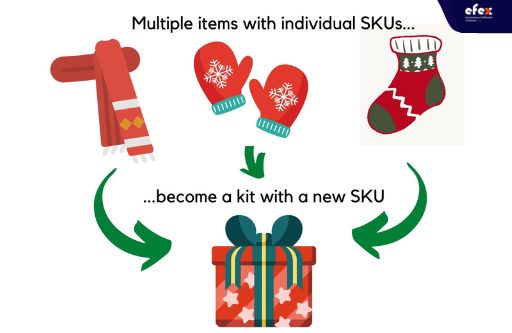
Inventory management software is designed to kit things for your business. Next, depending on your goods and customer, devise a strategy for selecting kitting products. You can include certain things in your subscription service, such as a best-seller, by combining them with other common products and a variety of amounts. You may also allow your subscribers to pick from a list of products they'd want to get as part of their membership.
👉 Read More: Full Kitting: Meaning and Process
Kitting is an easy yet efficient order fulfillment technique that will save your company a lot of money and time while also simplifying and organizing your fulfillment processes. Moreover, it's also something you'll have to keep an eye on daily. As your company expands, you may need to add new goods to your inventory list, and client preferences may shift over time and seasons.
It's crucial to audit your inventory for efficiencies—like kitting opportunities—on a regular basis to get the full advantages of kitting done correctly. You've found this article so helpful? Let's follow our Fanpage and website to get many interesting articles!
